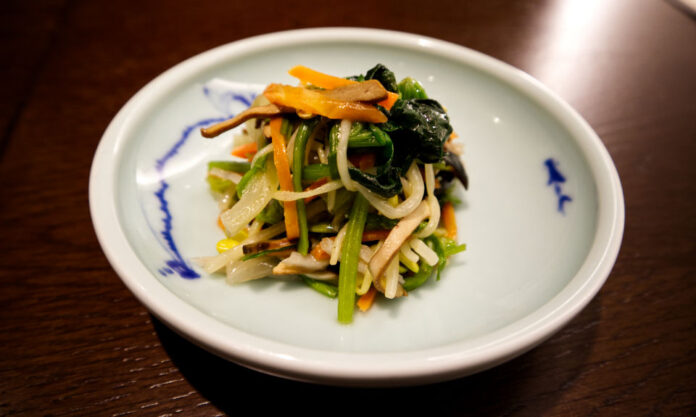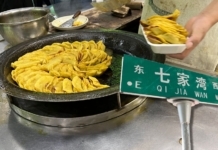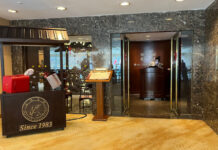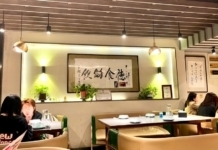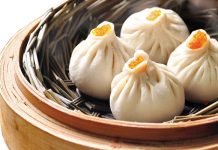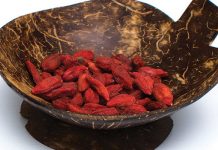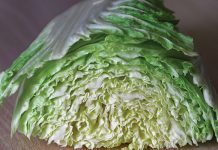We all know what the larger Fuzimiao area is like in the lantern season. Much as we are proud of it, we often have to avoid that area due to the crowd. It would be nice if there is a quieter corner, or in Xin Qiji’s (辛弃疾; 1140-1207) words, “Somewhere the lantern lights are sparse”, somewhere we can enjoy a bowl of yuanxiao at ease.
That is why I am writing this with mixed feelings; not yet known to many, there is indeed such a place right inside the Laomendong pedestrian zone. Plus, it leads to a hidden garden…
Wanguochun (万国春), a restaurant that is part of the Yihe Hotel, has a small entrance that seems to minimise touristic attention, as does its signage. Albeit in a separate building, the restaurant is designed in the same style as the hotel itself, with a restrained decor that resembles traditional residences in the lower-Yangtze region.
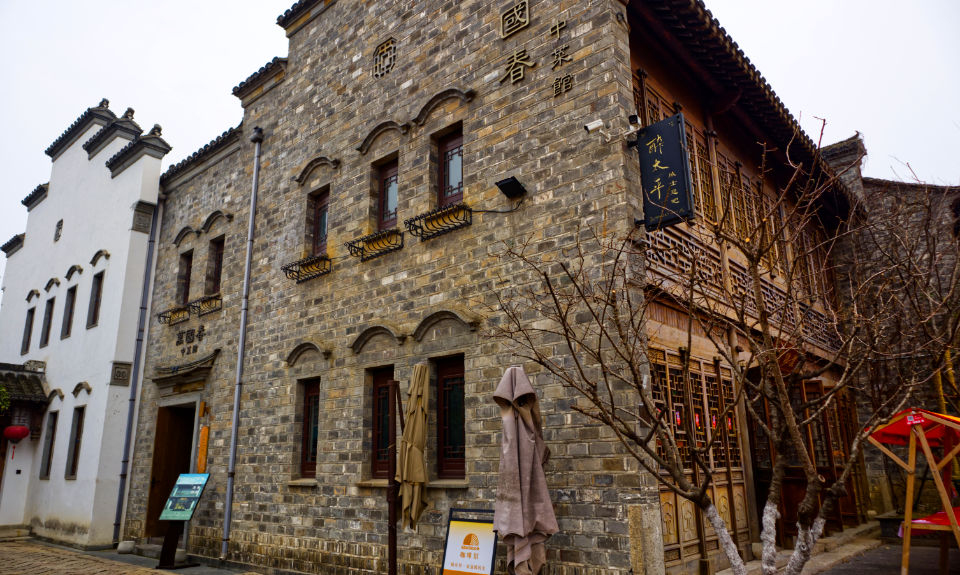
Let’s start with some appetisers. “Veggie Medley” (素什锦, regrettably translated as “pickled vegetables” on the menu) is a good option in almost every Nanjing restaurant. The tradition of eating assorted vegetables on the first day of spring is widely spread in China, but each region has their unique recipe. In Nanjing, the medley should include at least ten types of vegetables and doufu products. Apart from the commonplace; carrots, mushrooms and soybean sprouts; a distinctive Jiangsu flavour is added by local greens and water plants.
The time-consuming process of making this dish is a New Year’s ritual for traditional Nanjing families. Not only should each ingredient be cleaned and finely sliced, they should also be cooked one by one to achieve the right texture before mixed together. Some perfectionists believe that the order of cooking each ingredient is also important, because some vegetables will more easily lose juice or colour if cooked too early. The effort is worth making (or paying for) as it comes with double rewards. Firstly, you get a delicious appetiser that is refreshing, crunchy, colourful, and healthy. In addition, each ingredient makes an auspicious pun that brings fortune to the new year ahead.
Mains include “Dazhu Gansi” (大煮干丝, satisfyingly translated on the menu as “shredded bean curd sheet in a bouillon”), which, in my opinion, exemplifies the gist of classical Huaiyang cuisine.
Such aesthetics were developed as the richest households in the wealthiest region of imperial China tried to showcase the host’s good taste when guests had become bored of expensive ingredients.
A plate of shredded bean curd would serve the purpose very well. The main ingredient, a few sheets of bean curd, is humble enough, yet those who appreciate the everyday would treat it with extreme care and effort by slicing it into fine layers and then shreds. The clarified broth that gives the bean curd flavour is made with chicken and pork, but the meat should remain behind the scenes. Finally, the moderate use of salt and other seasonings is considered to be elegant, healthy and respectful to the original flavour of the ingredients. Thanks to the modern restaurant industry, this traditional dish is now more affordable in restaurants than at home.
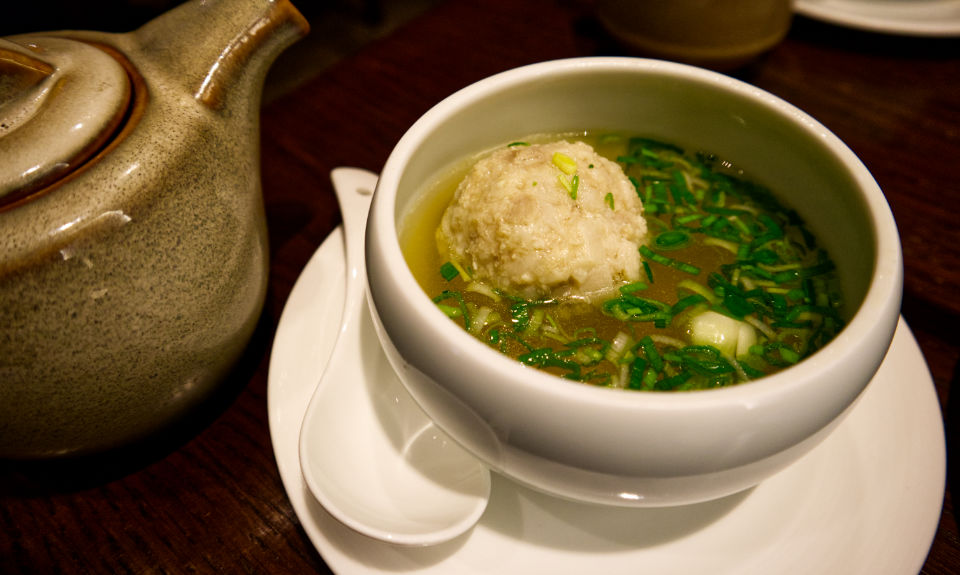
Highlight, however, is the restaurant’s “Xiaochi” (小吃; “small eats”, a broad term that may include dim sum, noodles, porridge, traditional dessert and so on). Here we are specifically talking about the Nanjing style; the so-called “Qinhuai xiaochi” (秦淮小吃), such as duck-oil pastries, rice shaomai with pine nuts, steamed rice cakes, glutinous rice balls in sweet soup, baby taro soup and the famous duck-blood noodle soup.
Most tourists would try some xiaochi at places such as Wanqing Lou (晚晴楼), which, sitting at the centre of Fuzimiao, is like a museum for Qinhuai xiaochi, conveniently offering a tasting menu that allows one to sample over a dozen xiaochi dishes in individual portions. However, such a tasting menu inevitably detaches xiaochi from their authentic context, as no one in everyday life would eat two bowls of different noodles, three bowls of different soup, four kinds of pastries and five kinds of dumplings in one sitting.
Hence, I feel more comfortable and connected eating xiaochi at Wanguochun, as I can imagine myself having a home-made, late-afternoon snack in one of the many residences by the Qinhuai river back in the late Imperial period. After that, I could either step out of the door and take a walk on the bustling street, or retreat to my garden and feed my red carps.
And guess what, there is indeed a classical Chinese garden behind the restaurant. For any civilised residence in late Imperial China, a garden (which by definition includes at least a pond, a bridge, a pavilion, and a mini mountain landscape made with porous rocks) is both a luxury and a must. It is like, to some extent, what a well-maintained lawn means for middle-class American homes. For playwright, fiction writer, book editor and publisher, Li Yu, however, his garden was the centre of his life in Nanjing. It was where his private theatre troupe rehearsed and performed his plays, and where he entertained the most prominent cultural figures of his day. Even his publisher-cum-bookstore was named after the garden.
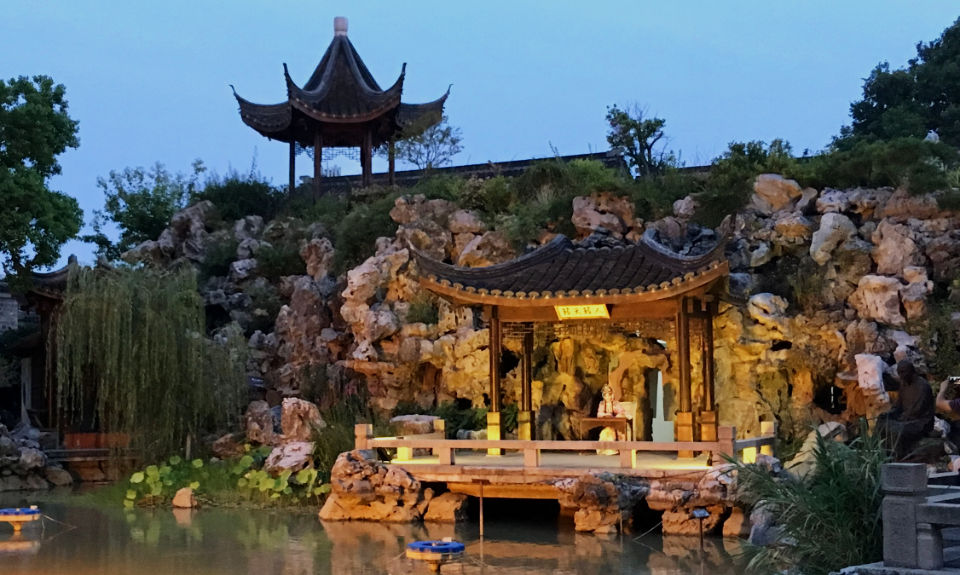
Today, free entry to the garden is afforded by dining at Wanguochun or staying in the hotel. The entrance for others who need pay does not look very appealing, which keeps it empty and quiet most of the time. Like all classical gardens, it is supposed to capture the beauty of every season; now is the best time for plum blossoms. In warmer evenings, kunqu opera performances are staged over the water, as a tribute to Li’s kunqu troupe which used to perform here for his guests.
“Shanghai may have a higher standard of living, but Nanjing has a better quality of life,” said my fellow diner. It was perhaps for the same reason that, while living in Nanjing, Li wrote and published “Leisure Notes” (闲情偶寄) , a collection of essays about how to appreciate, enhance and renew the experiences of everyday life, with topics ranging from garden design to indoor furnishings, music to women’s outfits, choosing pets to the art of sleeping. His gastronomic comments in the book would resonate with any Huaiyang cook of the modern day.
Now while I enjoy the simple yet refined food and wander in Wanguochun’s new Mustard Seed Garden, to go on and eventually rejoin in the liveliness along the streets around Laomendong, I feel that something of the old Nanjing is still alive, remaining today amid the modern constructions and reconstructions of urban life.


